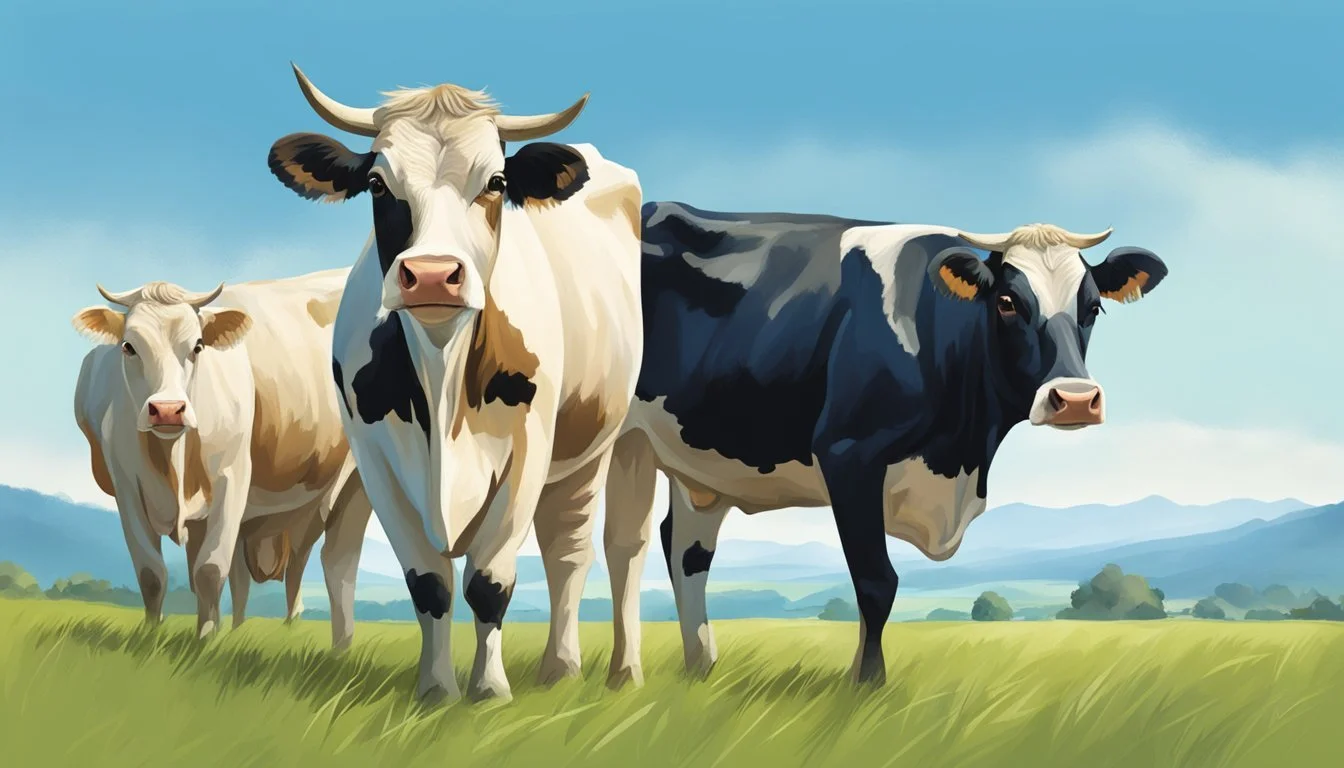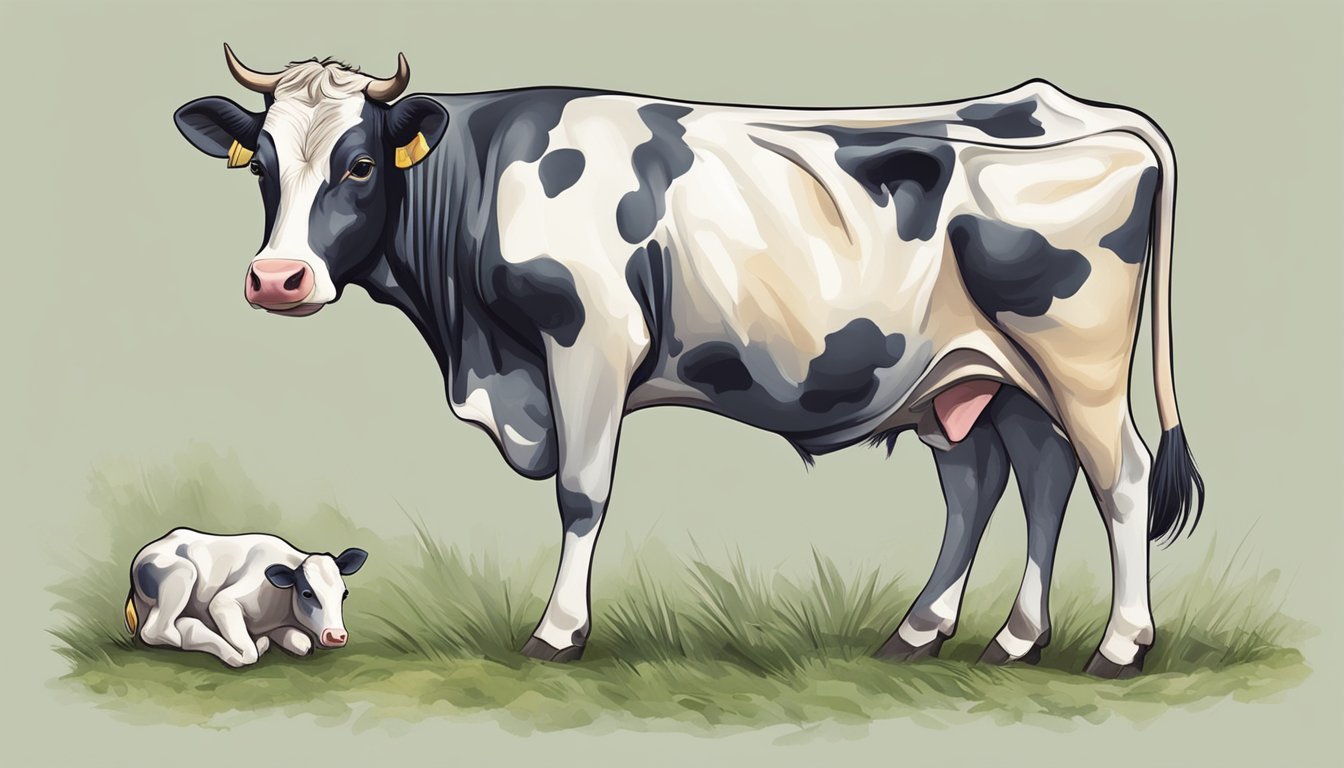What is the Gestation Period for a Cow
Understanding Bovine Pregnancy Timelines
The gestation period for a cow, the time from conception until birth, varies amongst breeds and individual animals but generally spans approximately 283 days. However, it is not uncommon for this duration to range from 279 to 287 days. Various factors such as the age of the cow, the breed, and environmental conditions can influence the length of the gestation period.
Understanding cow gestation is essential for effective herd management, ensuring that farmers and breeders can provide the necessary care throughout the cow's pregnancy. This knowledge also allows for the anticipation of calving dates, which is crucial for preparing to assist with births if necessary and for managing the nutrition and health of the pregnant cow to optimize outcomes for both the calf and the mother.
The parameters of a cow's gestation period are well-documented, with farmers often utilizing tools like gestation charts or calculators to predict calving dates. These resources can help in monitoring the progress of the pregnancy and in making timely management decisions, thereby supporting the welfare of the cow and the successful growth of the herd.
Understanding Gestation in Cows
The gestation period for a cow, a critical phase in bovine reproduction, typically spans a duration of about 283 days. This section outlines the average gestation length and examines the factors influencing its variance across different cows.
Gestation Period Overview
The average gestation period for a cow is generally 283 days. This is the time from conception to the birth of the calf. Farmers and veterinarians often use a gestation table as a tool to predict the calving date. The gestation table provides a range of expected delivery dates, which are based on the day of breeding.
Factors Affecting Gestation Length
Several factors can result in variations to the average gestation period length.
Breed: Specific breeds of cows can have different average gestation periods. For example, Angus cows typically have a period of around 283 to 285 days, compared to Herefords, which might range from 279 to 285 days.
Age: The age of the cow can also influence the length of pregnancy. Younger heifers might experience slightly shorter gestation periods, while older cows align more closely with the average.
Health and Body Condition: The overall health and body condition of a cow play significant roles in the duration of the gestation period. Good nutrition and health typically lead to average gestation lengths.
Sex of the Calf: Some evidence suggests that the sex of the calf can affect gestation length. Cows carrying male calves might have a slightly longer gestation period than those with female calves.
Gestation Duration by Breed
The gestation period for cows can vary significantly depending on the breed. Different breeds of dairy and beef cattle have their own specific ranges for gestation duration which is an important factor for farmers and breeders in managing herd reproductive schedules.
Common Dairy and Beef Cow Breeds
Angus: Typically exhibit gestation periods ranging from 283 to 285 days.
Hereford: Gestation can vary from 279 to 285 days.
Jersey: Known for shorter gestation periods, often around 279 days.
Ayrshire: Tend to have gestation lengths close to an average of 279 to 282 days.
Brown Swiss: Their gestations are similar to Jerseys, averaging around 280 days.
Highland: These cows may experience gestation periods around the 290-day mark.
Specialized Breeds and Gestation Variations
Brahman: They have longer gestation periods, which can extend beyond 292 days.
Charolais: Usually have gestation periods in the range of 281 to 292 days.
Dexter: This smaller breed can have gestation lengths varying from 276 to 279 days.
Glan: A rarer breed with limited data, but gestation is presumed to align with the common range of 280 to 285 days.
Each breed's gestation duration is impacted by multiple factors including the cow's health and the sex of the calf. These durations are average estimates and may fluctuate based on individual circumstances.
Managing Cow Pregnancy
Effective management of cow pregnancy is essential to ensure the health of both the pregnant cow and the calf. This includes providing optimal nutrition, routine veterinary check-ups, and meticulous record-keeping.
Nutritional Management
The diet of a pregnant cow must deliver adequate nutrition to support not only the development of the calf but also the cow's own body needs and future milk production. During the early stages of pregnancy, the focus is on maintaining a balanced diet that fulfills the cow's usual energy requirements. As the gestation progresses, particularly in the last trimester, the cow's energy intake should increase to accommodate the rapid growth of the fetus. It is also during this period that nutritional deficiencies can lead to complications such as weak calves or dystocia (difficult labor).
Veterinary Care and Monitoring
Regular veterinary care throughout pregnancy is critical. Veterinarians can monitor the health of the cow and developing calf, often utilizing tools like ultrasound to assess the fetus's condition. Timely vaccines and treatments for parasites are necessary to protect the pregnant cow's health. Any signs of illness or complications should be addressed immediately under a veterinarian's guidance to safeguard the well-being of both the cow and her unborn calf.
Breeding and Calving Records
Maintaining detailed breeding and calving records is vital for managing cow pregnancies effectively. Records should include the breeding date, any veterinarian visits, ultrasound results, and observations of the cow's health. A cattle gestation calculator can be a useful tool for predicting calving dates, while tracking the gestation length can help prepare for the upcoming calving period and identify any potential issues. It is also important to document any previous birth complications to inform the management of future pregnancies.
Labor and Calving Process
The labor and calving process in cows is a critical time that requires careful monitoring to ensure the health of both the mother and the newborn calf. Recognizing the signs of impending calving, providing appropriate postpartum care, and understanding common complications are essential for successful calving management.
Signs of Impending Calving
When a cow is getting close to her due date, she will exhibit several behavioral changes indicative of the onset of labor. These signs include restlessness, isolation from the herd, and the beginning stages of udder development, where the udder fills with colostrum. The cow's vulva may also swell, and there can be a discharge of mucus. Recognizing these signals is pivotal to prepare for the birth and to provide any necessary assistance during calving, ensuring the wellbeing of both heifer calves and bull calves.
Postpartum Care
After the cow has given birth, postpartum care becomes a priority. It is crucial to monitor the cow's health for any signs of complications, such as retained placenta or metritis. New calves should be observed to ensure they are suckling properly and receiving adequate colostrum, which is rich in crucial antibodies. Good hygiene and a comfortable environment will aid in the recovery of the cow and the health of the newborn calf.
Common Calving Complications
Calving difficulty, also known as dystocia, can occur due to various factors such as the size of the calf or the age of the cow. Heifer cows might experience more difficulty during birth if it's their first time calving. Immediate intervention may be needed if progress stalls or if the calf is positioned incorrectly. Early detection of these complications can prevent undue stress on open cows and increase the chances of survival for new calves.
Breeding and Gestation Cycle
The successful breeding and gestation cycle of a cow hinges on understanding the estrous cycle to optimize the timing for conception. Knowledge of this cycle, paired with effective strategies, ensures that both beef and dairy cows can be bred at the appropriate time to maintain consistent intervals between pregnancies.
Understanding the Estrous Cycle
The estrous cycle of a cow typically spans 21 days, during which she becomes receptive to breeding—a phase called estrus or heat. During this time, it's crucial for farmers to detect signs of estrus for timely conception. The cycle includes several stages: proestrus, estrus, metestrus, and diestrus. Estrus lasts roughly 12 to 18 hours and is the prime time for breeding.
Strategies for Timely Conception
Farmers employ various strategies to ensure cows are impregnated soon after becoming pregnant again. Accurately determining the breeding date is essential. Artificial insemination (AI) is widely used for its precision in timing, often resulting in conception rates that rival natural service.
For both beef cow and dairy cow operations, monitoring the herd for signs of cycling and using AI can optimize the gestation period, which averages 283 days. It is a critical aspect of managing a herd successfully, ensuring cows are not out of production for extended periods and can become pregnant again in a timely fashion after calving.
Health and Management Challenges
Managing the health of pregnant cows is crucial as it directly impacts the outcomes of both gestation and lactation periods. Cattle farmers must stay vigilant against complications while understanding how genetics influence these challenges.
Detecting and Managing Diseases
Diseases during gestation can lead to increased calf mortality, including abortions and stillbirths. Detecting diseases early in mature cows is pivotal. Disease testing, regular health screenings, and maintaining a clean environment reduce the risk of complications. Key diseases to monitor include Bovine Viral Diarrhea (BVD) and Neosporosis, which can disrupt normal gestation.
Key Practices:
Regular veterinary check-ups
Vaccination programs
Biosecurity measures to prevent disease entry and spread
Farmers also implement strategic nutritional plans to support immune health and manage stress in cows, which can exacerbate health issues.
Genetic Factors
The breed of the cow significantly affects gestation management. Genetic predispositions can influence the length of gestation and susceptibility to certain health issues. Carefully selecting breeding stock based on genetic data can help farmers predict and prepare for potential challenges.
Genetic Considerations:
Breed-specific gestation lengths
Inherited disease resistance
Traits influencing calf viability
Cattle genetics research aids in developing protocols tailored to specific breeds to optimize health outcomes during gestation.
Economics of Cow Gestation
The gestation period of cows has a direct influence on farm profitability and efficiency. Managing gestation effectively ensures healthy births and a steady supply of calves for various purposes within the agricultural industry.
Gestation Impact on Farm Profitability
The length of a cow's gestation is typically around 283 days; however, it can range from 279 to 292 days depending on factors such as breed and calf sex. The precise expected due date is crucial for farmers as it allows for proper planning in terms of labor and facility use. Efficient cow calving management can reduce costs associated with prolonged pregnancies. Moreover, the use of a cattle gestation chart and a cow gestation calculator can aid in monitoring due dates, which is vital for optimizing breeding cycles and profitability. Operations with a streamlined calving season often have lower feed costs due to more uniform nutritional management of the herd, and this synchronization can improve the sale value by providing uniform batches of calves.
Additional Resources and Tools
A variety of resources support farmers in managing gestation. Customized cow gestation calculators facilitate accurate prediction of due dates, allowing farmers to allocate resources intelligently. Online databases offer cattle gestation charts which serve as quick reference guides. Furthermore, advanced nutritional management platforms assist in planning diets that support pregnancy and lead to healthier calves. Utilization of these additional resources invariably contributes to enhanced farm efficiency and productivity, making them important economic tools in cattle farming.






